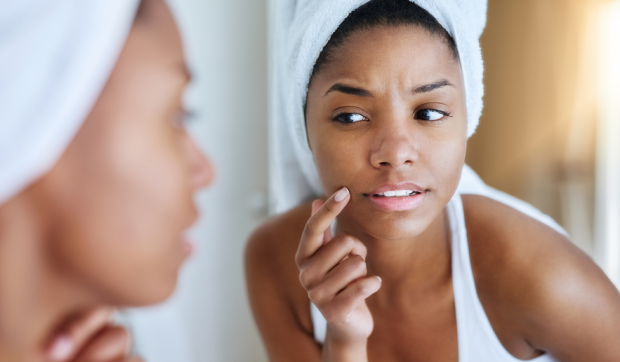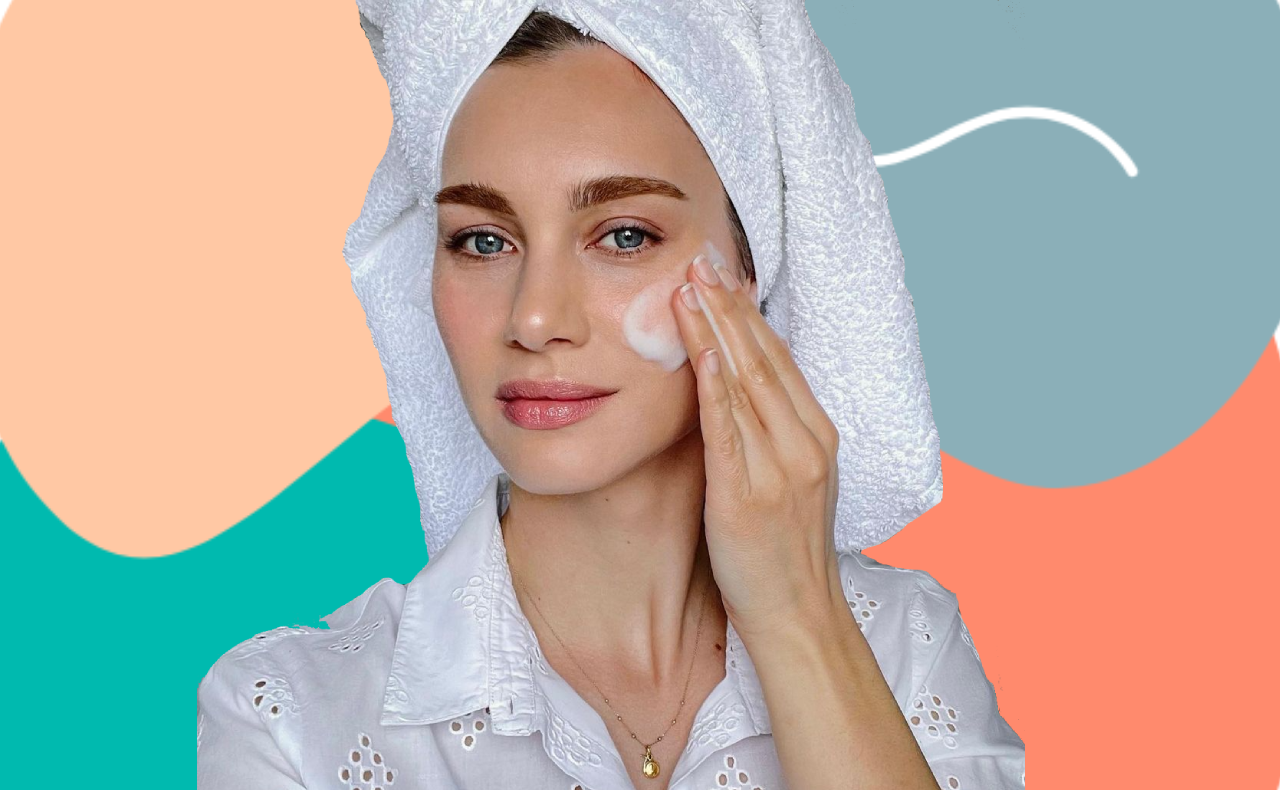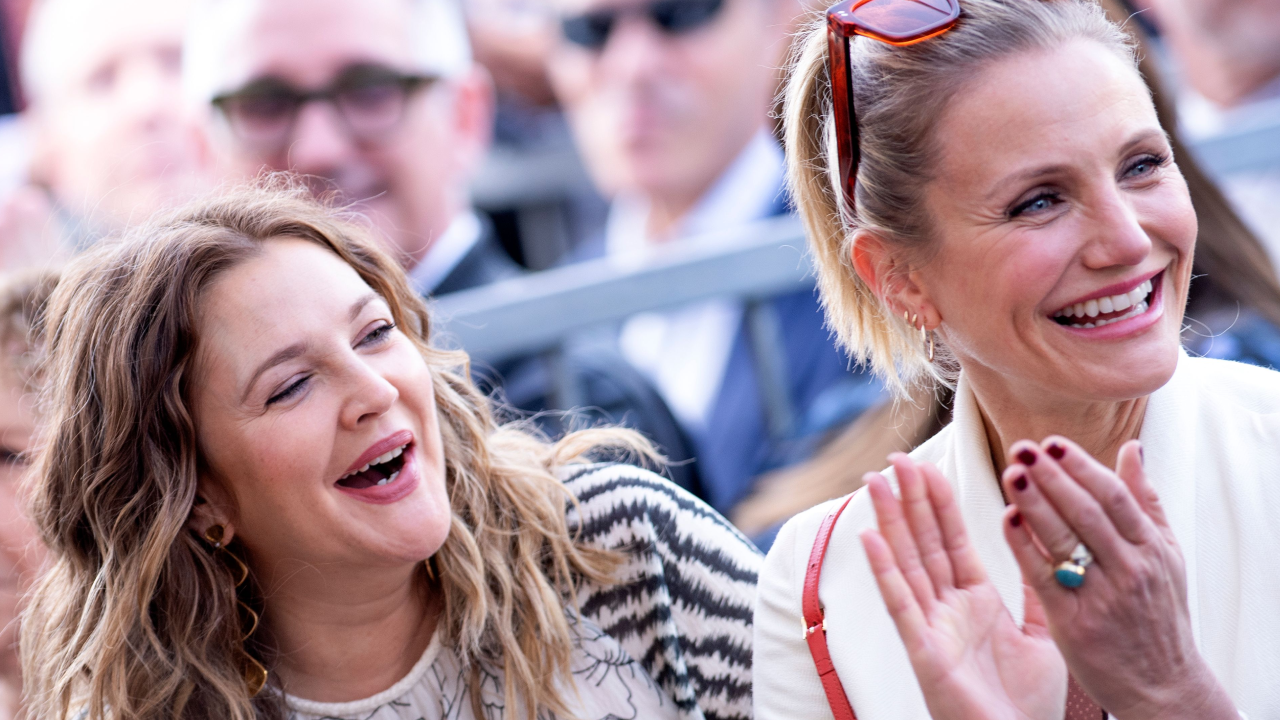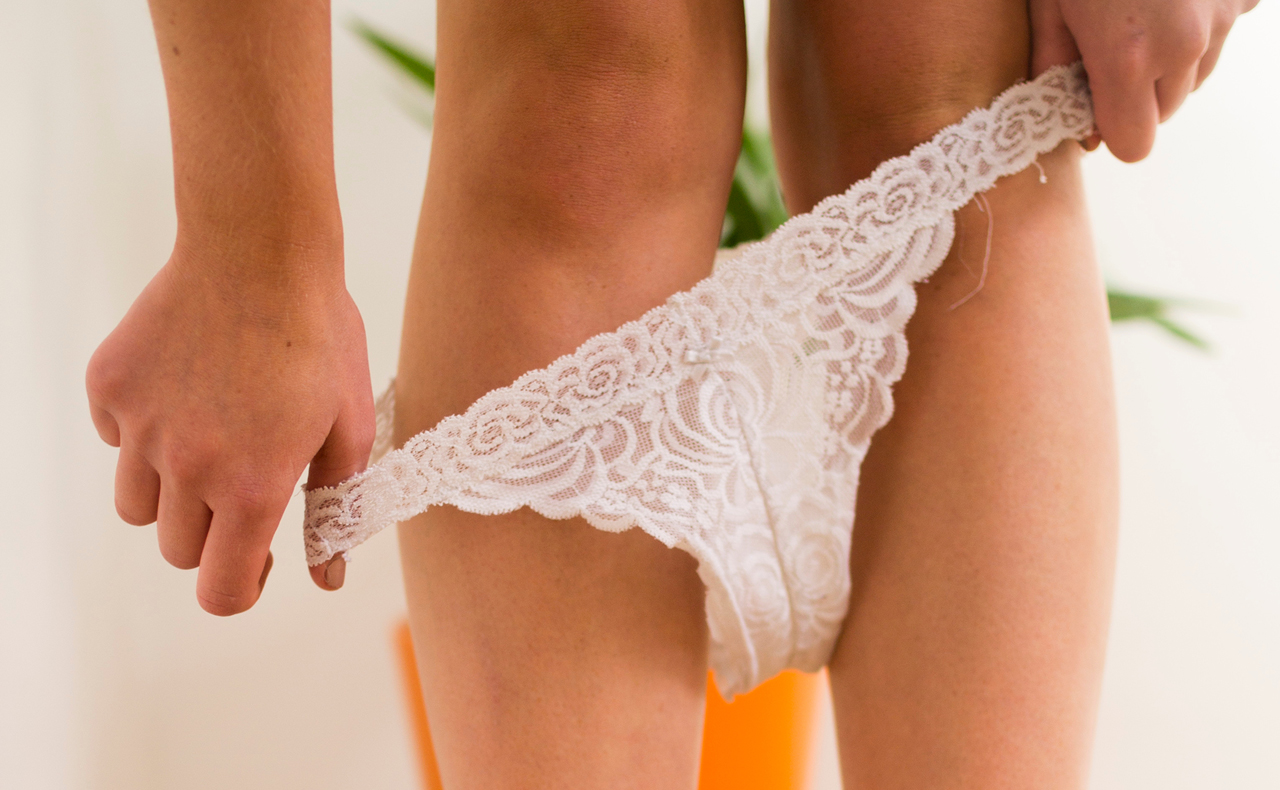The pimple family consists of six entirely different variations, each with their own needs and characteristics. And while they all fall under the same general definition of irritated or infected pores, it’s crucial to understand that the pimples you’re experiencing on your back might be broadly different to those popping up on your forehead.
RELATED: How to Deal With Hormonal Acne, According to an Expert
RELATED: Salicylic Acid: The Ingredient Acne Sufferers Need to Know About
So just when you thought you had your pimple-banishing regimen all figured out, you might want to think again.
From the do-not-touch hormonal cysts to the ready-to-blow whiteheads, here is everything you need to know about the six different variations of pimples.

1. Whiteheads
By definition, whiteheads are closed comedones, and occur as the result of the buildup of bacteria or sebaceous matter when a pore becomes closed. This type of pimple is considered a mild form of acne and is caused by hormonal fluctuations, irritation and clogged pores. Essentially, a whitehead forms when a thin layer of skin is trapped over the oil, which is why they look the way they look.
Physical appearance: Typically white or yellow and a small yet solid, protruding bump.
Location: Whiteheads can be found anywhere on the body. Typically, in the oiliest parts of your face. AKA the nose, forehead and chin, otherwise known as the T-zone. They may also develop on your chest, back, shoulders and arms.
Treatment: One of the easier pimple variations to combat, whiteheads are easily eliminated through consistent chemical exfoliation and topical retinoids. Speaking to Cosmopolitan, dermatologist Dr Zeichner shared, “the most common ingredient used to treat whiteheads is salicylic acid, a beta-hydroxy acid (BHA) that works to open up your pores”. While we don’t typically recommend popping pimples, if you feel your whitehead is about to burst, Caroline Hirons recommends the following technique: “Finish your cleanse and hold the warm flannel over the spot for a minute. Now take clean hands, split two bits of loo roll and wrap them around your forefingers and gently squeeze in from the outside. It should come away easily. If it does, great – make sure the area is clean, tone, moisturise and go on your way.”
bh recommends: Alpha-H Clear Skin Daily Hydrator Gel, SkinCeuticals Retinol 1.0, tbh Skincare acne hack OG bundle
2. Blackheads
Otherwise known as open comedones, this pain-free variant is not dissimilar to how apples, avocados or bananas turn brown when left uncovered – AKA oxidation. Speaking to Allure, dermatologist Michelle Henry explained, “blackheads form when the opening of a hair follicle becomes clogged or plugged with dead skin cells and oil.” On the opposite side of the spectrum to whiteheads, which result from closed pores, blackheads develop off the back of open pores.
Physical appearance: Small brown or black dots. Not to be confused with sebaceous filaments, which you can read about here.
Location: Typically found across the nose, chin and side of the face. Can also be found on the arms, chest and back.
Treatment: Cleanse the affected area with salicylic, benzoyl peroxide or glycolic acid-containing washes.
bh recommends: Paula’s Choice Skin Perfecting 2% BHA Liquid Exfoliant, CeraVe SA Smoothing Cleanser, Panemorfi Skincare 4% Glycolic Acid Exfoliating Scrub
3. Papules
A papule, although slightly tender, is your regular, run of the mill, relatively harmless pimple. However, the lifecycle of a papule can go one of two ways. They can develop and grow into a painful pustule (more on this below) or disappear on their own. Typically hanging around between five to 10 days before deciding their fate, these pus-free bumps are the result of an infected pore.
Physical appearance: Raised red, swollen bumps. Often arising in clusters.
Location: Face, chest, shoulders, back and arms.
Treatment: As papules are the result of inflammation, the best way to treat them is by soothing and calming the area rather than drying it out, which may trigger further inflammation. Methods such as icing the swollen spots and focussing on products containing calming ingredients like kaolin clay and green tea are your best route for a scar and inflammation-free treatment.
bh recommendations: Nutrimetics Ultra Care+ Clarifying Clay Treatment, innisfree Green Tea Balancing Skin EX
4. Pustules
Pustules are sore, angry and inflamed bumps – the mother of all pimples. Not to be confused with a whitehead (a closed hair follicle full of oil and dead skin cells), this variation of pimple can also form a bubble-like head, however, these bad boys are filled with pus (once again, hence the name).
Appearance: Red, swollen and inflamed pustules often containing a yellow gunk-type liquid.
Location: Same as papules
Treatment: While some websites will tell you to pop these bad boys and the little head of pus is screaming “POP ME,” Caroline Hirons warns you to “step away from the spot.” Instead, she recommends for victims of these painful pimples to “keep it clean, keep it moisturised, keep an eye on it and it will go away.” Popping these pimples runs the risk of a bacterial infection which will lead to scarring. Try drawing out the infection by holding a hot, wet and clean washcloth over the spot and apply drying lotions or spot treatments enriched with antibacterial ingredients such as zinc oxide and sulphur.
bh recommends: Kiehl’s Blue Herbal Spot Treatment, Paula’s Choice CLEAR Extra Strength Daily Clearing Skin Treatment with 5% Benzoyl Peroxide
5. Cysts
Typically caused by hormones, cystic breakouts are categorised as a more severe form of acne. These pus-filled lumps are deep-rooted in the tissue of the skin with no way out (hence why they often won’t come to a head). According to celebrity esthetician Renée Rouleau, cysts will “eventually heal (your body reabsorbs the infection), but can remain a painful lump for weeks,” she explained when speaking to Byrdie.
Appearance: Large, swollen lumps that sit under the skin.
Location: Typically found on the chin and jawline.
Treatment: Like most other spots, Renee strongly warns against picking a cyst. “Despite being sore, it’s not meant to come out through the surface and if you attempt to do so, you’ll most certainly have a scar that will linger for months.” Instead, she suggests an ice pack and calming serums to reduce swelling. If you get persistent cysts, it is recommended you seek out a dermatologist.
6. Nodules
As severe as a cyst in terms of size and pain, nodular pimples form deep, hard bumps under the surface. However, unlike cysts, nodules are not filled with pus. According to Healthline, “nodules occur when clogged, swollen pores endure further irritation and grow larger.”
Appearance: Often colourless, large, hard bumps.
Location: Typically found on the chin and jawline.
Treatment: Nodular pimples take more than a salicylic acid wash to scare them off. Often hanging around for weeks at a time, these severe forms of acne often require prescription oral medication as they are too deep under the skin to reach with topical treatments.





Did not realise that whiteheads and blackheads were a type of pimple.